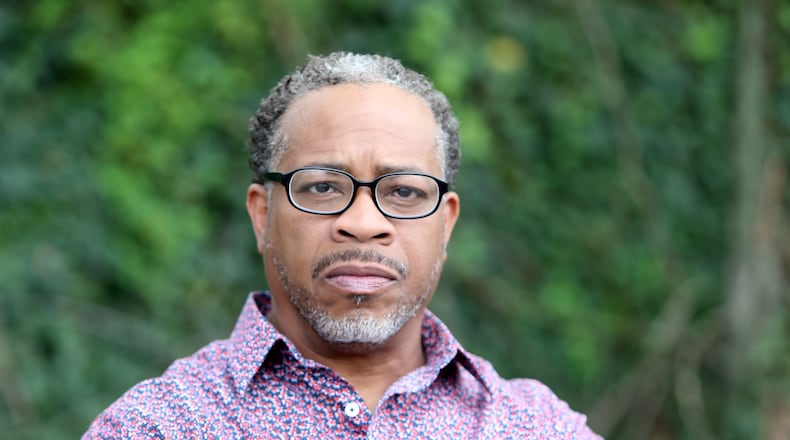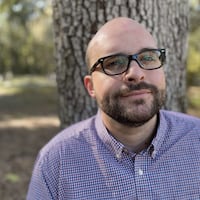Derwin Davis says he sees a face in his mind, clear today as it was 40 years ago.
It’s a man, asking 14-year-old Derwin strange questions inside a car in southwest Atlanta in 1979. Suddenly the man reaches out to grab Derwin. Almost reflexively, he elbows the man in the face, jumps out of the car and runs away.
The man, Davis says he later realized, was Wayne Williams, who authorities have long believed terrorized the city between 1979 and 1981, a period when 29 black children and young adults were killed. Williams, who's serving life in prison, comes to mind a lot for Davis lately, after officials announced they would take a fresh look at old evidence in the infamous Atlanta Child Murders.
The news unearthed memories for many Atlantans, especially those who were kids during the horror. It has also brought praise for Mayor Keisha Lance Bottoms and others who acknowledge nagging doubts about how the cases were handled. Calls are pouring into city police from folks who want to share tips. Even some of the original detectives welcome the project because they want to know if new forensic technology can help finally settle whether Williams alone did all the killing.
Davis approached The Atlanta Journal-Constitution with his story because, amid the renewed attention, he wants to make sure Williams isn’t recast as a victim.
“I know what he tried to do to me,” Davis says.
The children’s cases were closed without charges in 1982, weeks after Williams was convicted of murdering two adults; Fulton County authorities said they were certain he’d killed the kids, but they opted against more trials because Williams was already going to prison for two life terms.
"People are going to be talking about this 100 years from now, just like we're still talking about Jack the Ripper." —Danny Agan, who worked two of the cases as an Atlanta Police detective
Criticism began immediately and hasn't stopped.
“People are going to be talking about this 100 years from now,” says Danny Agan, who worked two of the cases as an Atlanta Police detective, “just like we’re still talking about Jack the Ripper.”
If that’s true, Davis says he wants people to have as much information as possible to decide how to feel about Williams’ claims that he’s totally innocent. Williams’ attorney didn’t respond to requests for comment.
‘Never will forget’
Davis didn’t tell the police.
He says he didn't want to worry his family, and he'd never heard of any child murders. The first victims hadn't been found yet. Three years later, when Williams was arrested, Davis saw him on TV and recognized him as the man who'd tried to molest him. Davis says he didn't come forward because the cops already had Williams.
The AJC can’t verify Davis’ account because he made no outcry to authorities, but the newspaper spoke with three people who say he told them the same story years ago. Another person didn’t recall.
His wife, Tammy Davis, heard about it shortly after they were married 32 years ago. She noticed her husband spent little time around men and especially seemed to avoid being alone one-on-one with them. She pressed him until he broke down and told her the story, the same one friends El Dietrich Jackson and Marc Green say he would later tell them.
Davis was walking near Campbellton Road to catch a bus and go work at Greenbrier Skating Rink. A car approached, and the driver, who was pudgy with an afro and big glasses, asked for directions. Then he offered Davis a ride to work. The boy accepted.
Along the way, they talked:
Where do you go to school? the driver asked.
Douglass High, Davis shared.
I bet ya got a lot of girlfriends.
I got my share.
I bet ya got a big (expletive).
The driver looked at the boy.
A moment later, the driver reached over to grab Davis’ penis but instead got an elbow to the face.
The encounter left Davis scarred.
“I never will forget Wayne Williams’ face,” he says.
READ: Feds say Atlanta family plotted terrorism while at N.M. desert compound
READ: EXCLUSIVE: How systems failed to protect Effingham kids before death
READ: How a mysterious disappearance nearly destroyed a woman’s life
The story is similar to the one Tim Thomas told Channel 2 Action News this week. He says Williams had given him a ride in the late 1970s, offered him money for sex and then grabbed him. Like Davis, Thomas escaped.
At Williams’ trial, a 15-year-old boy testified Williams had offered him money for sex while giving him a ride, as lead prosecutor, Jack Mallard, noted in his 2009 book, “The Atlanta Child Murders: The Night Stalker.” The boy also testified he’d seen one of the slain children, Lubie Geter, 14, get into Williams’ car, apparently on the day Lubie disappeared.
The doubts
Folks with opinions about Williams tend to fall into three camps: the ones who trust he killed all 29 victims, those who believe Williams’ claims that he is totally innocent and people who think he killed many of the victims — but not all of them.
The last group is where Agan finds himself.
The retired police detective says he has “no doubt” Williams killed most of the victims, but at least two seem different: the girls.
Angel Lanier, 12, disappeared from her home in March 1980 and was found in the woods off Campbellton Road. The boys went missing from public places, not their homes. Also unlike the boys, her hands were bound with electrical tape. In the book, Mallard says Angel ‘s death was “never believed to be part of the pattern” the task force investigating the cases was created to track, but there was “pressure” to add her to “the list” so the task force would look into her murder.
Mallard, who died in 2015, didn't say who applied the pressure.
LaTonya Wilson, 7, was abducted from home while her family slept one night in June 1980 and, according to Mallard, was added to the list for the same reason as Angel.
At trial, the prosecution painted Williams as a pedophile who was attracted to boys. Williams denied it. But if the prosecution was correct, Agan wonders why Williams would go after girls.
Frank Ski, the V-103 radio personality who’s spoken with Williams and the victims’ families many times, says race undoubtedly factored into the doubts over whether all the cases were investigated thoroughly enough.
Forty years ago was only 15 years removed from the Jim Crow era, and three Ku Klux Klan members were investigated in the cases before detectives ruled them out as suspects. Had the kids been white and affluent instead of impoverished and black, Ski thinks authorities wouldn't have been as quick to place all the blame on Williams and close the children's cases without fully weighing the possibility that there were multiple killers.
“There’s no way race wasn’t a part of it,” he says.
Lasting trauma
Davis doesn’t have a problem with authorities retesting evidence. But he gets angry and hurt when he thinks of people sympathizing with Williams. He says he can only be sure of what Williams did to him, but he thinks what happened on Campbellton Road shows who Williams is.
The memory comes back: the face, that awful day.
He isn’t positive of the date but figures it might’ve been July 21, 1979. That’s when Edward “Teddy” Smith, 14, was apparently last seen after leaving the skating rink where Davis worked. Davis says he recalls people looking for Teddy just a few hours after Davis’ ordeal.
Teddy was found dead a week later off Niskey Lake Road, near the body of Albert Evans, 14. They were the first two victims. Like others would, Albert apparently died of asphyxiation. Teddy had been shot in the head.
Davis thinks of them and wonders: What if I got away just in time?
About the Author
The Latest
Featured





